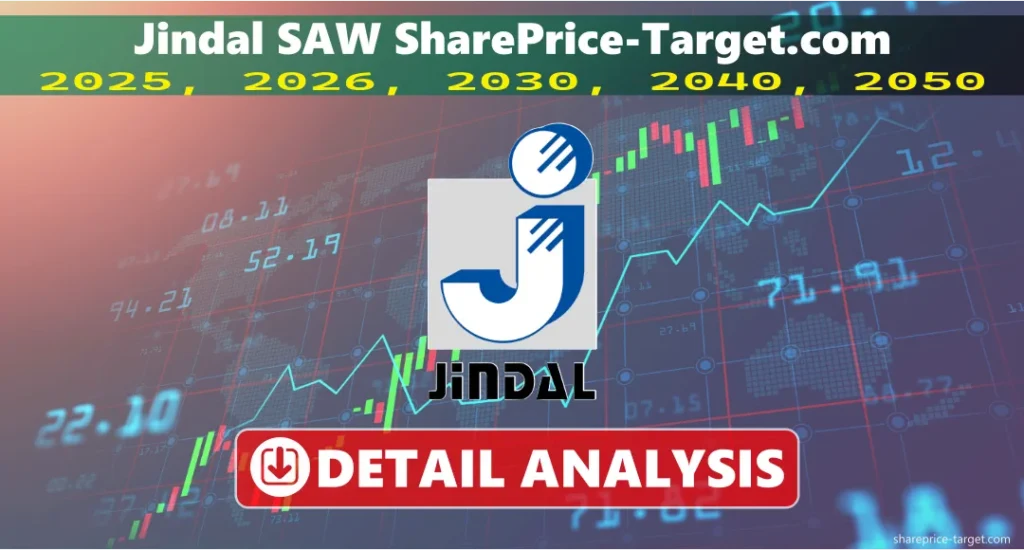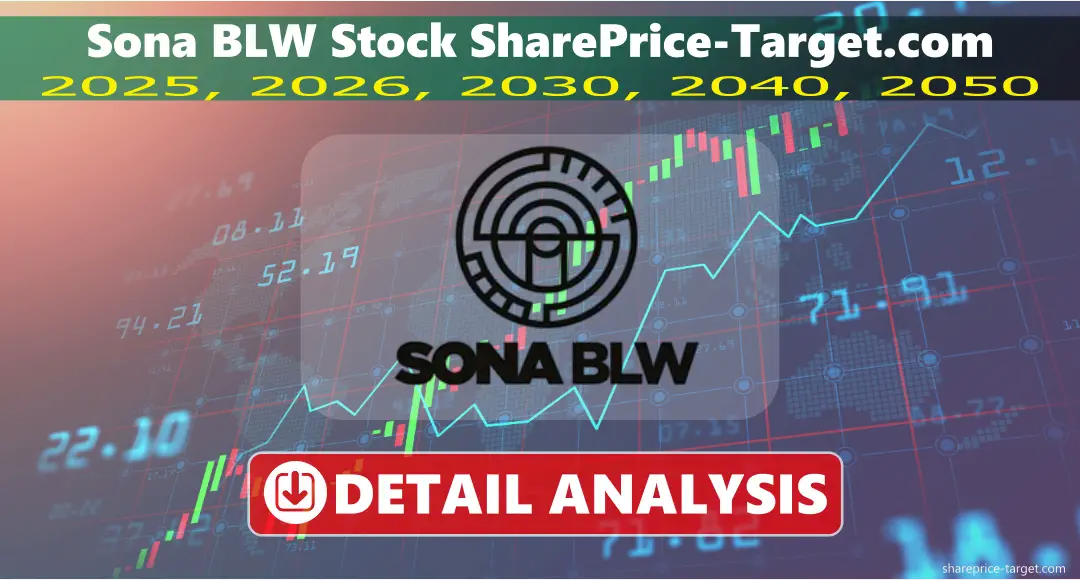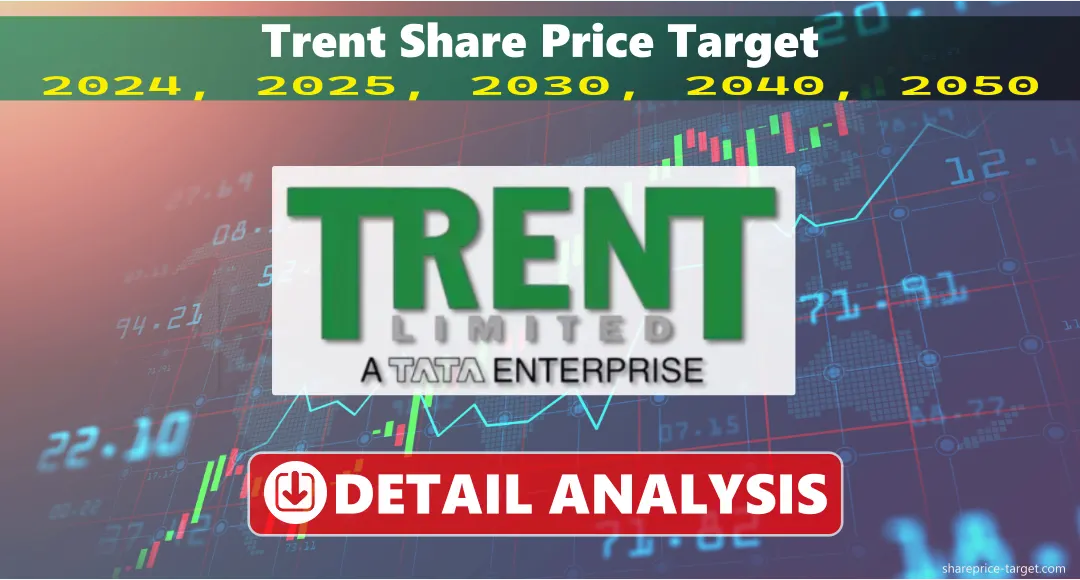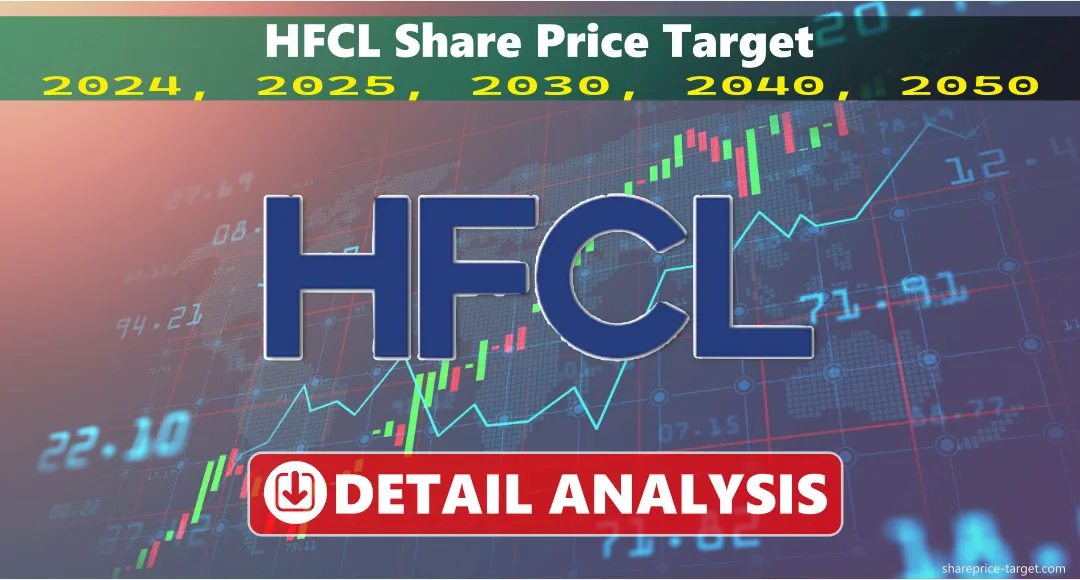Jindal SAW Share Price Target 2025, 2026, 2030, 2040, 2050
Jindal SAW Ltd., founded in 1984, is a worldwide leader in large diameter saw pipes, DI pipes, seamless tubes, and anti-corrosion coated pipes. After years of growth, the company’s stock price reflects its solid fundamentals and market position. Understanding share price objectives helps investors make long-term investing choices.
- 1 What Is Jindal Saw Ltd NSE: JINDALSAW?
- 2 Share Price Target Tomorrow
- 3 Share Price Target 2025
- 4 Jindal Saw Share Price Target 2026
- 5 Jindal Saw Share Price Target 2027
- 6 Share Price Target 2028
- 7 Share Price Target 2029
- 8 Jindal Saw Share Price Target 2030
- 9 Share Price Target 2040
- 10 Share Price Target 2050
- 11 Should I Buy Jindal SAW Stock?
- 12 Jindal Saw Ltd Earning Results
- 13 Expert Forecasts On The Future Of Jindal Saw Ltd.
- 14 Is Jindal Saw Stock Good To Buy? (Bull Case & Bear Case)
- 15 Conclusion
- 16 FAQs
Fundamental Analysis Table
| Metric | Value |
| Face Value | ₹2.00 |
| Book Value | ₹214.20 |
| P/E Ratio | 6.36 |
| Dividend Yield | 1.23% |
| TTM EPS | ₹30.87 |
| 52-Week High | ₹383.85 |
| 52-Week Low | ₹164.28 |
Key Metrics Table
| Parameter | FY 2024 | FY 2025 |
| Revenue Growth | 3.58% | 3.7% |
| Profit Growth | 73.81% | 19.6% |
| EBITDA Margin | 15.2% | 16.8% |
| ROE | 14.5% | 15.2% |
Peers Comparison Table
| Company | P/E Ratio | Market Cap (Cr) | YoY Growth |
| Jindal SAW | 6.36 | 20,803 | 121.26% |
| JSW Steel | 12.4 | 156,721 | 45.2% |
| Tata Steel | 8.2 | 142,560 | 38.7% |
What Is Jindal Saw Ltd NSE: JINDALSAW?
Established in 1984, Jindal SAW Ltd (NSE: JINDALSAW) is a leading global manufacturer and supplier of iron and steel pipes. The company has emerged as a market leader in large-diameter Submerged Arc Welded (SAW) pipes, with manufacturing facilities in India, the USA, Europe, and UAE.
Company Overview
- Founded: 1984
- Headquarters: New Delhi, India
- Market Capitalization: ₹20,803 Crores
- Current Share Price: ₹325
- Industry: Steel & Iron Products
- Employees: 7,517
| Parameter | Change |
| Maximum Target | +5.95 |
| Minimum Target | -6.95 |
Jindal SAW is a leading manufacturer of large diameter SAW, DI, and seamless tubes. The company’s diversified product line and strategic global presence support its market position. Investing in infrastructure projects, with an order book of ₹15,300 crores and growing export potential, prepares them for development. In 2025, its share price target would be ₹463, as per our analysis.
By our prediction, its share price would be between ₹201 to ₹463 in 2025.
| Year | Minimum Price (Rs) | Maximum Price (Rs) |
| 2025 | 201 | 463 |
| Month | Minimum Price (Rs) | Maximum Price (Rs) |
| January | 217 | 290 |
| February | 224 | 270 |
| March | 230 | 286 |
| April | 218 | 302 |
| May | 170 | 310 |
| June | 158 | 328 |
| July | 152 | 338 |
| August | 141 | 355 |
| September | 240 | 374 |
| October | 291 | 388 |
| November | 300 | 400 |
| December | 324 | 463 |
Jindal SAW’s 2025 share price estimate exhibits growth potential because of its robust order book, worldwide expansion, and infrastructure demand. The company’s high-margin product and debt reduction strategies should create value. Experts expect the company’s market value to expand with major capacity expansion and technical enhancements. In 2026, its share price target would be ₹530, as per our analysis.
By our prediction, its share price would be between ₹324 to ₹530 in 2026.
| Year | Minimum Price (Rs) | Maximum Price (Rs) |
| 2026 | 324 | 530 |
| Month | Minimum Price (Rs) | Maximum Price (Rs) |
| January | 324 | 381 |
| February | 340 | 398 |
| March | 331 | 409 |
| April | 340 | 420 |
| May | 353 | 438 |
| June | 367 | 444 |
| July | 378 | 450 |
| August | 380 | 455 |
| September | 398 | 460 |
| October | 405 | 472 |
| November | 425 | 488 |
| December | 457 | 530 |
Strategic expansion and rising global steel demand bode well for Jindal SAW in 2026. Focusing on debt reduction, operational efficiency, and order book growth bodes well for the organisation. The firm is poised for development with considerable investments in green technology and upgrading manufacturing facilities. In 2027, its share price target would be ₹695, as per our analysis.
By our prediction, its share price would be between ₹457 to ₹695 in 2027.
| Year | Minimum Price (Rs) | Maximum Price (Rs) |
| 2027 | 457 | 695 |
In 2028, its share price target would be ₹863, as per our analysis.
By our prediction, its share price would be between ₹681 to ₹863 in 2028.
| Year | Minimum Price (Rs) | Maximum Price (Rs) |
| 2028 | 681 | 863 |
In 2029, its share price target would be ₹1044, as per our analysis.
By our prediction, its share price would be between ₹850 to ₹1044 in 2029.
| Year | Minimum Price (Rs) | Maximum Price (Rs) |
| 2029 | 850 | 1044 |
With its strategic development goals, technology advances, and global infrastructure needs, Jindal SAW’s 2030 outlook is bright. Sustainable production and a solid local and international market presence set the firm up for significant expansion. In 2030, its share price target would be ₹1220, as per our analysis.
By our prediction, its share price would be between ₹1024 to ₹1220 in 2030.
| Year | Minimum Price (Rs) | Maximum Price (Rs) |
| 2030 | 1024 | 1220 |
Due to its solid foundations, technical improvements, and worldwide expansion, Jindal SAW’s long-term development trajectory seems optimistic. Sustainable manufacturing, green technology, and strategic infrastructure development market positioning show growth possibilities for the organisation. In 2040, its share price target would be ₹2703, as per our analysis.
By our prediction, its share price would be between ₹2500 to ₹2703 in 2040.
| Year | Minimum Price (Rs) | Maximum Price (Rs) |
| 2040 | 2500 | 2703 |
Due to its strong steel market position and ongoing technical improvements, Jindal SAW’s ultra-long-term growth potential remains robust. To reflect the expected rise in sustainable manufacturing, digital transformation, and infrastructure development. In 2050, its share price target would be ₹4553, as per our analysis.
By our prediction, its share price would be between ₹4306 to ₹4553 in 2050.
| Year | Minimum Price (Rs) | Maximum Price (Rs) |
| 2050 | 4306 | 4553 |
Should I Buy Jindal SAW Stock?
Jindal SAW is a promising investment based on market study and business performance. The firm has performed well with a $1.65 billion order book and solid KPIS. Consolidated sales rose 12%, EBITDA 38.2%, and PAT 70.5% YoY in Q1 FY25.
| Year | Minimum Price (Rs) | Maximum Price (Rs) |
| 2025 | 201 | 370 |
| 2026 | 324 | 530 |
| 2027 | 457 | 695 |
| 2028 | 681 | 863 |
| 2029 | 850 | 1044 |
| 2030 | 1024 | 1220 |
| 2040 | 2500 | 2703 |
| 2050 | 4306 | 4553 |
The company’s shares outpaced the Sensex by 12.13% last month. The firm is financially sound with a March 2024 ROE of 16.61%, above its 5-year average of 9.1%4. SBI Securities’ target price of ₹784.3 indicates a 13.69% potential increase.
Jindal Saw Ltd Earning Results
Q1 FY25 results from Jindal SAW exceeded analyst forecasts with robust growth across all major financial measures. The company’s value-added goods and operational efficiency have improved margins across all product groups.
| Financial Metrics | Q1 FY25 | Q1 FY24 | YoY Growth |
| Revenue | ₹4,939 Cr | ₹4,410 Cr | +12.0% |
| EBITDA | ₹839.6 Cr | ₹607.7 Cr | +38.2% |
| Net Profit | ₹441.1 Cr | ₹265 Cr | +66.7% |
| EBITDA Margin | 17.0% | 13.8% | +3.2% |
Expert Forecasts On The Future Of Jindal Saw Ltd.
Leading market experts and financial institutions expect Jindal SAW to expand. SBI Securities’ target price of ₹784.3 suggests substantial upside potential3. Key expert predictions:
- Revenue visibility for the next 3-4 quarters is solid. With 32% of the company’s $1.65 billion order book coming from worldwide markets, this implies ongoing export growth.
- Sathavahana is scheduled to provide 200,000 tonnes at peak usage in FY25 and 50,000 tonnes via debottlenecking.
- Financial performance is expected to improve, building on Q1 FY25’s 70.5% YoY PAT increase and 38.2% EBITDA growth driven by value-added goods and operational efficiency.
- Analysts expect the company’s debt reduction plan will increase financial KPIs and shareholder value by FY26 by eliminating long-term debt.
- Market analysts expect urbanization and smart city projects to fuel water infrastructure development, accounting for 70% of the order book.
Is Jindal Saw Stock Good To Buy? (Bull Case & Bear Case)

Bull Case
- Revenue growth is likely with $1.65 billion in order book visibility and 32% export orders.
- Outstanding Q1 FY25 performance with 70.5% YoY PAT and 17% EBITDA margin.
- Strategic expansion at Sathavahana provides 200,000 tonnes of capacity and 50,000 tonnes via debottlenecking.
- Well-diversified product portfolio spanning main pipe segments with no product exceeding 30% of sales.
- Good operational indicators with a 12% YoY Iron & Steel Pipes production increase.
Bear Case
- Increased standalone debt from ₹3,200 to ₹3,900 crore for increased working capital needs.
- The net profit margin of 7.20%, the lowest in five quarters, indicates pressure for profitability.
- Recent quarters’ highest debt-to-equity ratio of 0.74 times indicates financial risk.
- Commodity price changes threaten margins and profitability.
- Global economic circumstances and regulations may affect demand and operations.
Conclusion
Strong fundamentals, a huge order book, and targeted expansion strategies make Jindal SAW an attractive investment. Despite short-term issues, including debt and commodity price uncertainties, the company’s long-term prospects are good. The stock appeals to medium—to long-term investors due to its expected debt reduction by FY26 and worldwide expansion.








